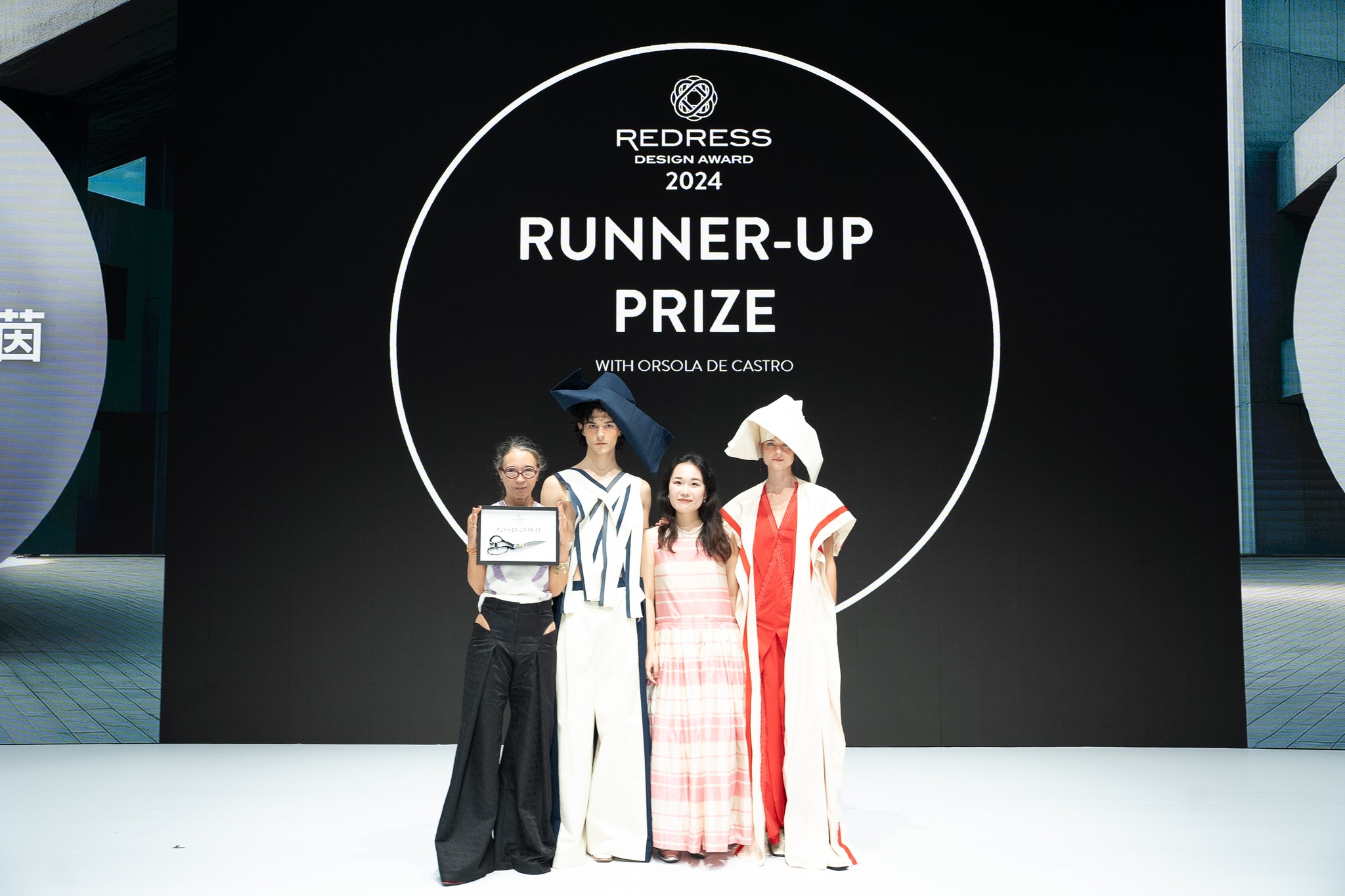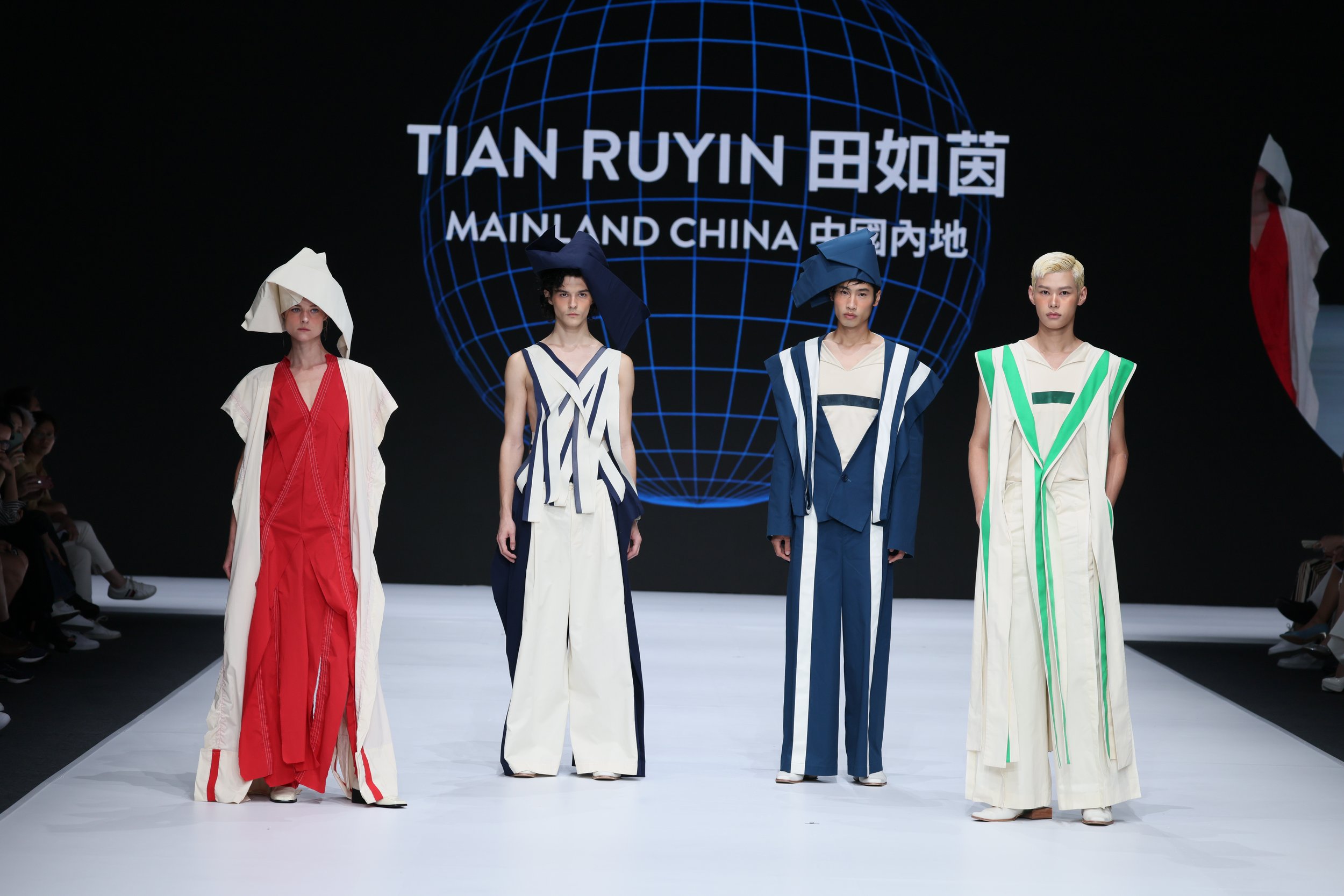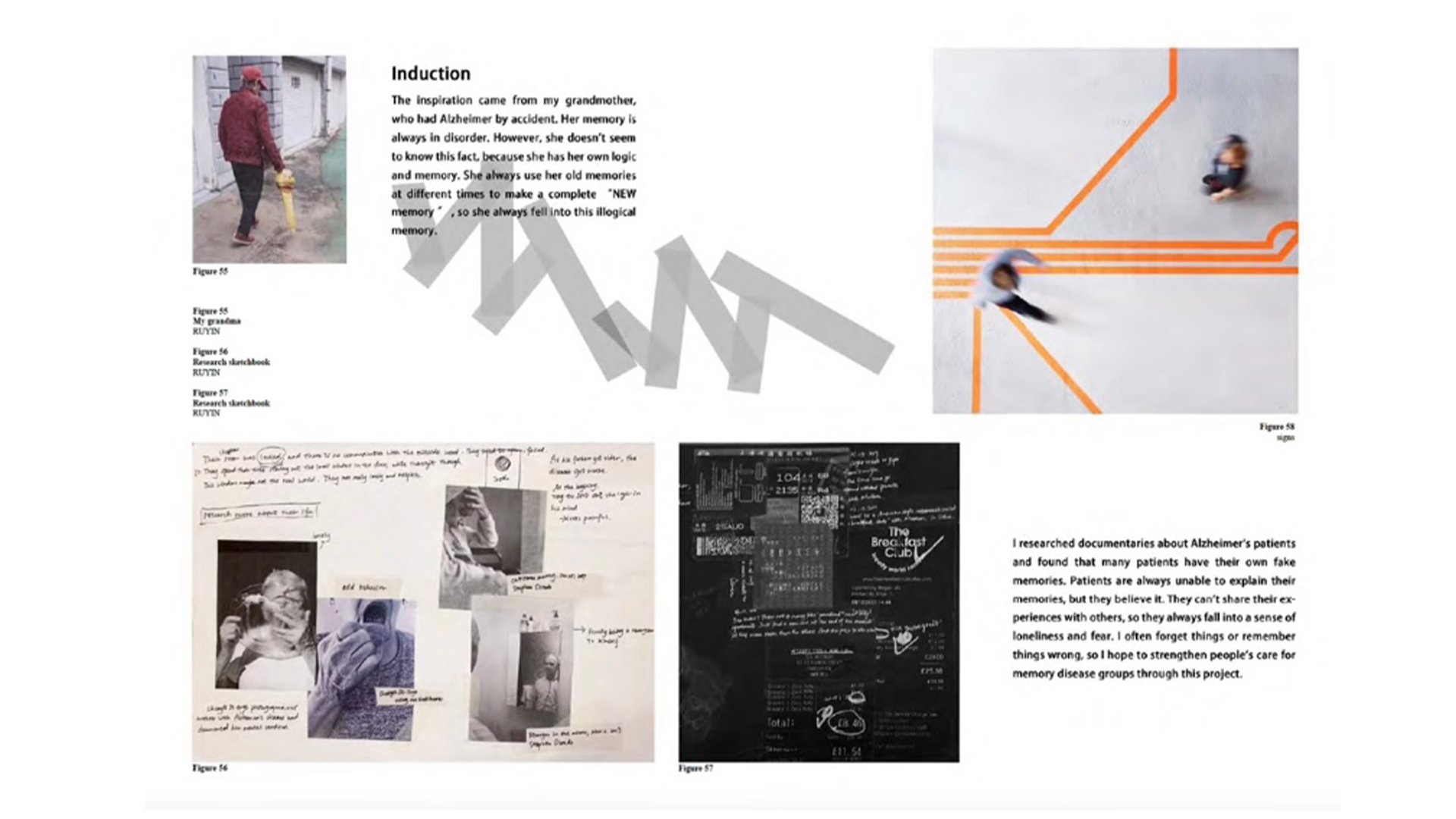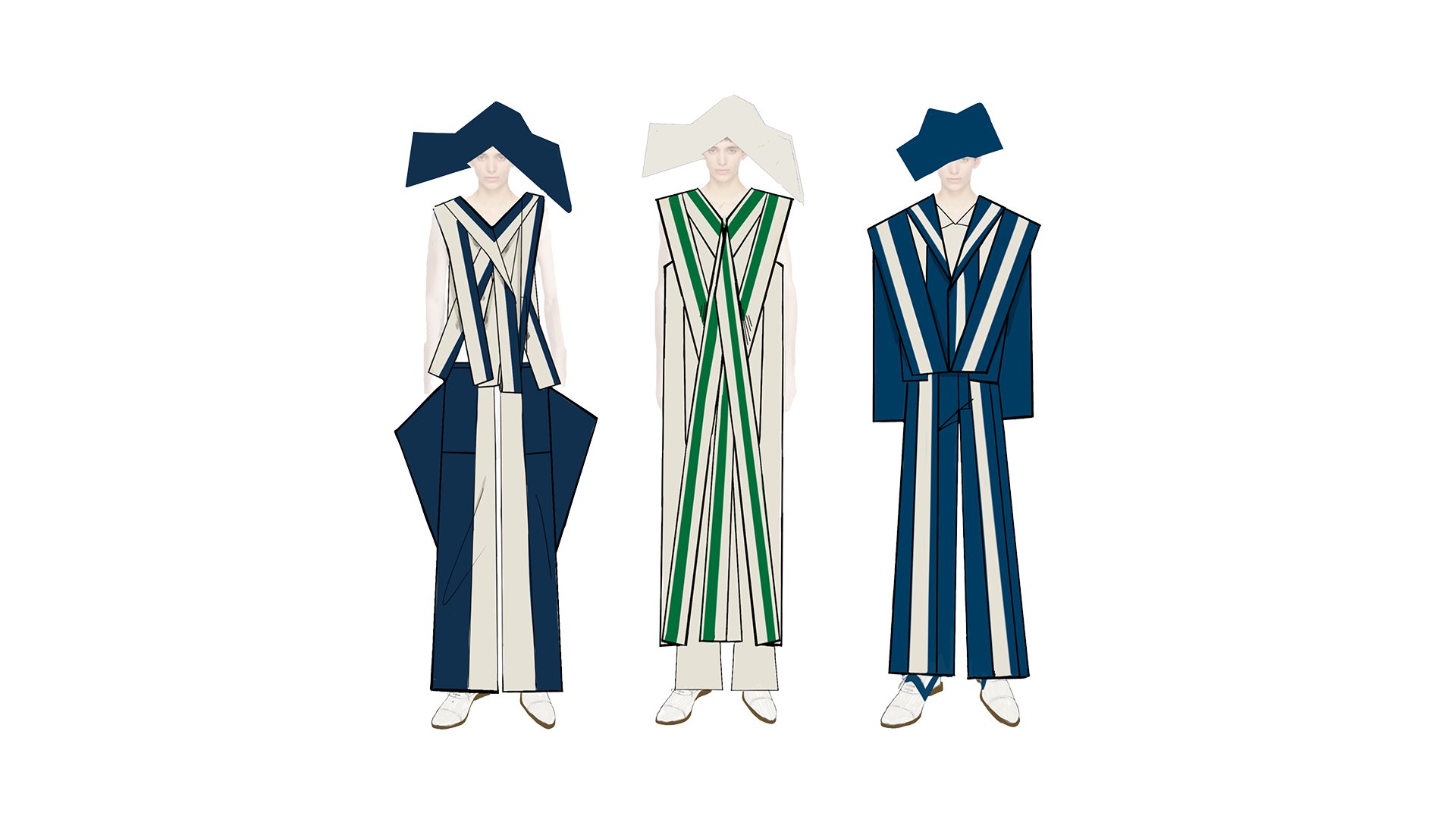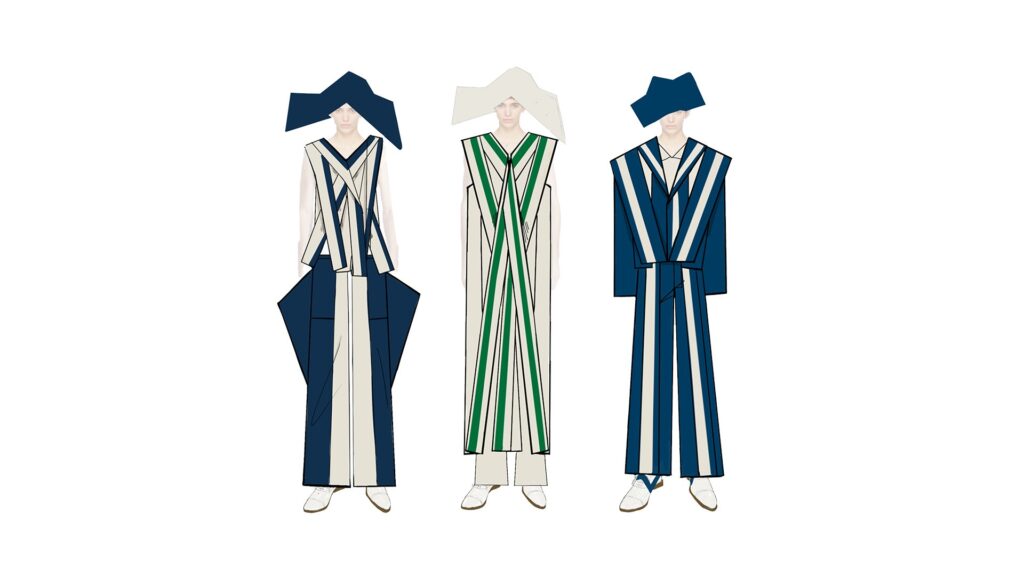Redress Design Award Collection
Ruyin’s Redress Design Award collection, ‘STRIP STRAP STRIPE’, is inspired by her grandmother and the chaos of memory loss through Alzheimer’s disease. The collection explores aiding memory through cutting patterns and folding strips of fabric, forming zero-waste garments. Ruyin designs for low impact by selecting materials such as organic cotton and recycled fibres from end-of-rolls and cut-and-sew waste. The garments are durable and versatile, with multiple ways of being worn via removable parts. Secondhand cotton ribbons are spliced into the garments to elevate their style, including a zero-waste vest made from a single piece of ribbon.

